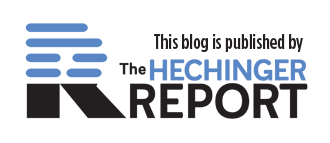There’s a provocative online opinion piece, No Rich Child Left Behind, posted April 27th on the New York Times website by Stanford education professor Sean Reardon. His analysis of test-score and income data leads him to conclude that the achievement gap between the richest and the poorest has grown 40 percent worse over the past 30 years. The rich are now outpacing the middle class by as much as the middle class outpaces the poor. That’s a change from the past where the rich and the middle-class used to score similarly. Today, the achievement differences among different income groups, Reardon argues, are far more pronounced than, say, the black-white achievement gap.
He doesn’t think bad schools are to blame. It’s that the rich are different.
“High-income families are increasingly focusing their resources — their money, time and knowledge of what it takes to be successful in school — on their children’s cognitive development and educational success. They are doing this because educational success is much more important than it used to be, even for the rich,” writes Reardon.
In other words, the rich are signing their kids up for more piano lessons, reading to them more, hiring tutors and exposing them to the Louvre. No wonder their scores are soaring and these little princesses and princes are leaving everyone else in the dust.
I live in New York City amid the one percent of our nation. From my vantage point, I see more hired help , after-school activities and iPad time than parents playing with or reading to their kids. Often the nannies of the rich speak in grammatically incorrect sentences, yet the children under their care still excel on verbal tests. On one level, that gives me reason for optimism. If we could just sign the poor up for more activities and improve preschool education, maybe the poor could catch up some. But then, my pessimism returns. The kinds of enrichment and preschool programs that help the rich excel are prohibitively expensive to roll out nationally. At Chelsea Piers in Manhattan, for example, a “gymjitsu” class costs $35 a week. Plus you’d need a parent who can take off a few hours of work in the middle of the day or an $18/hour nanny to get them there and back. I personally know of several four year olds who have an activity every day.
There’s also an issue of motivation among low-income parents. Even if the government or the non-profit sector creates opportunities for their preschoolers, will they come? I often wonder why I don’t see low-income families at the amazing free weekend art programs for preschoolers at the MOMA.



